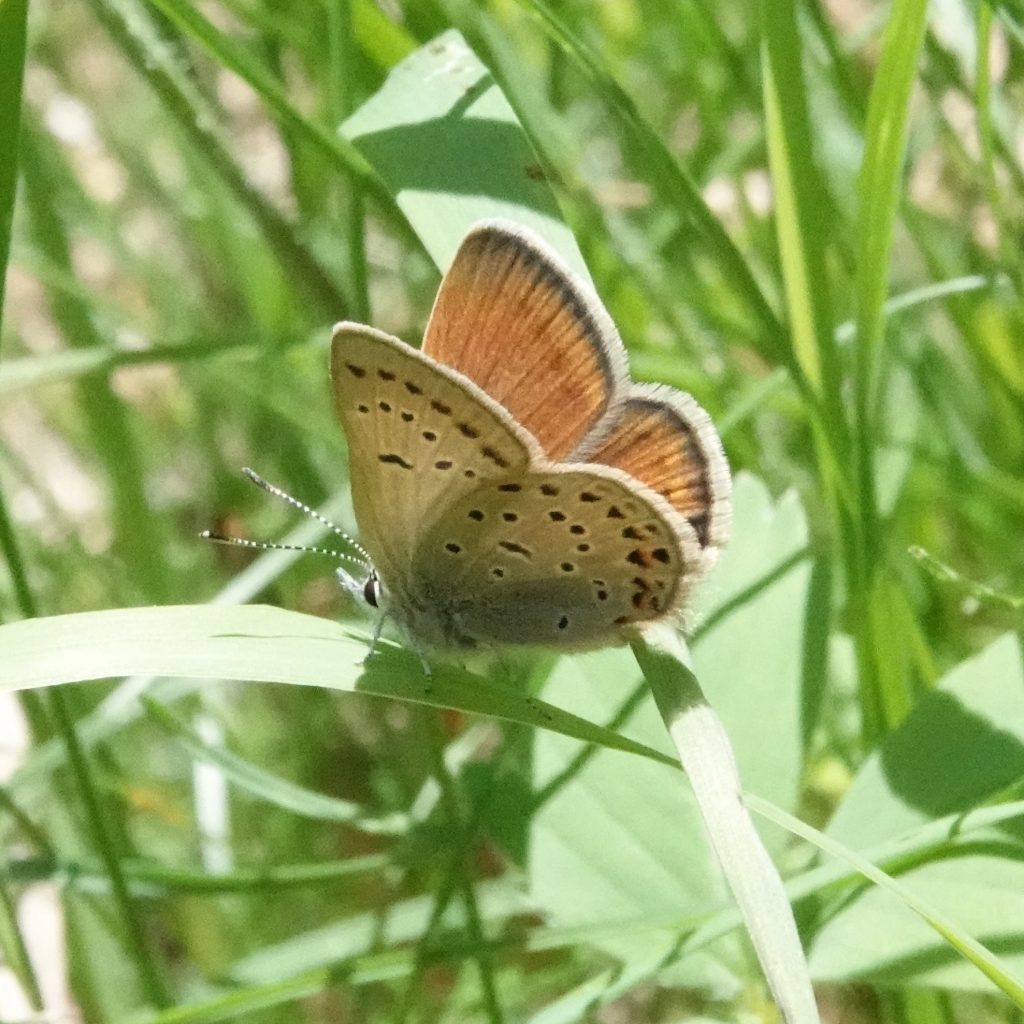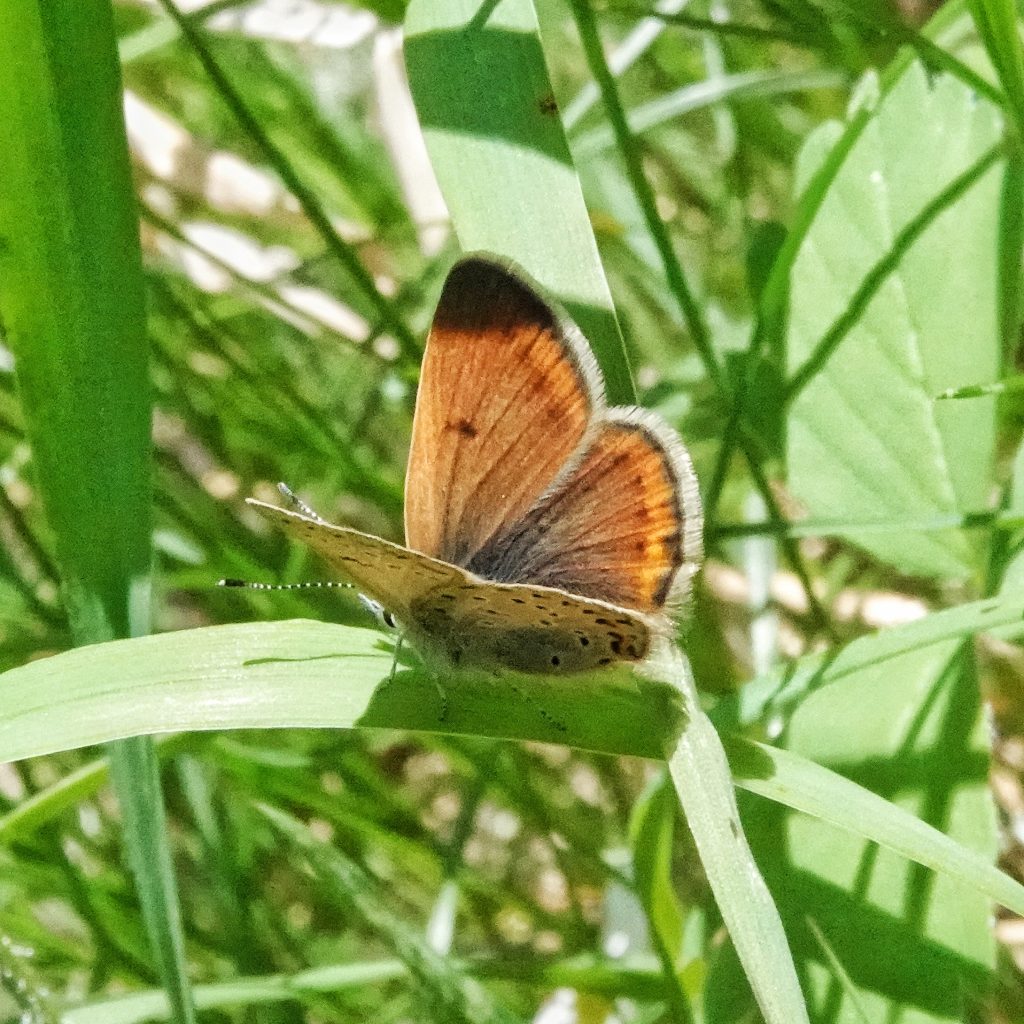
The first time I ever found these pretty little blues was on a Father’s Day weekend camping trip to Big Summit Prairie with my nbo Morgan (the same trip where the Apantesis ornata immolated itself in our campfire), and there were hundreds (thousands?) of them in a wet meadow near our campsite. I was quite confused by their sexual dimorphism and was still far from sure what I’d found when I sent some photos to Bob Pyle for confirmation. But I’ll bet that what Morg remembers most from that experience was their dad’s seeming inability to transfer the butterflies that they had netted into a viewing box without letting them escape. Finally I just gave them the clear plastic container and they transferred the greenish blues flawlessly, and were finally able to see just how pretty these little butterflies are.
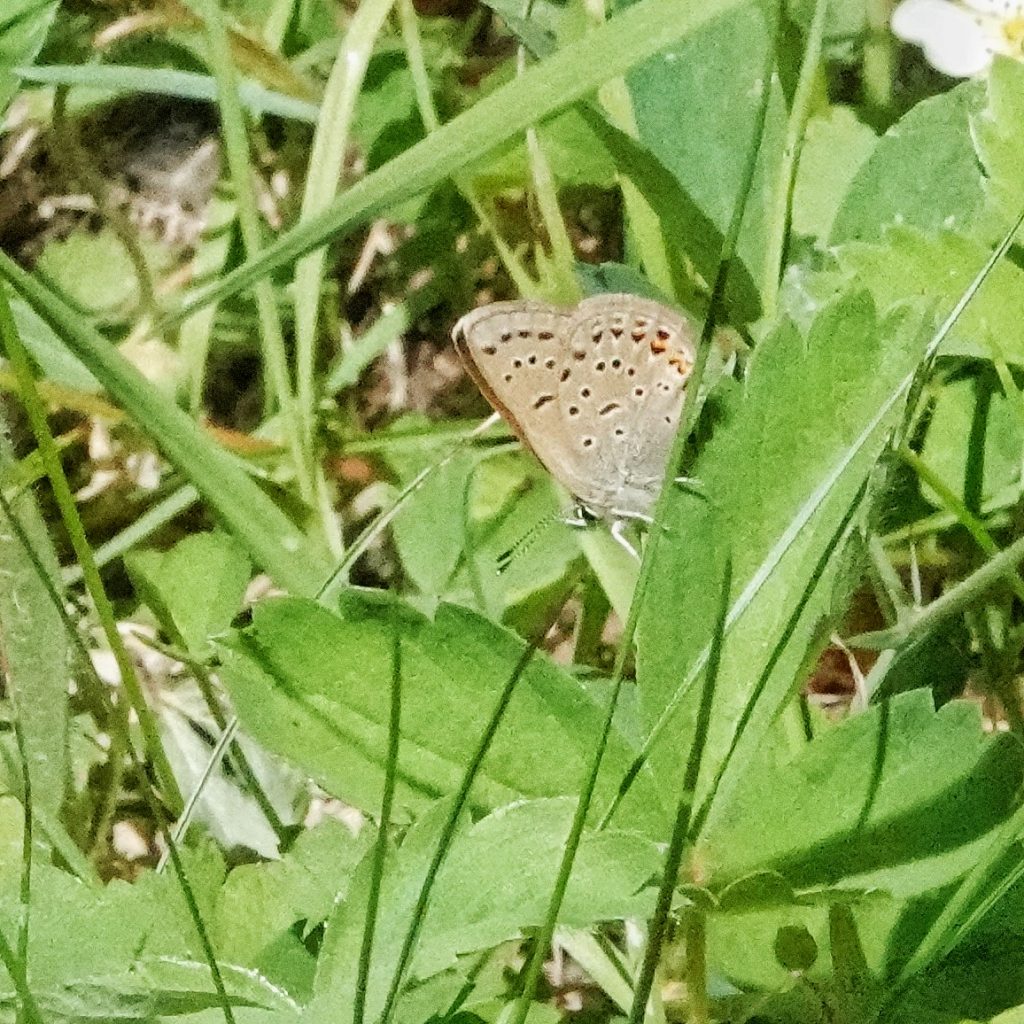
I apologize for not having any photos of a male, but these two females were the only greenish blues where I managed to tolerate the mosquitoes I bemoaned in the blog ‘Lost Creek ‘ long enough to creep close enough for diagnostic photos. There is a long running question as to whether Icaricia is a valid genus, or whether it more properly is a subgenus of Plebejus, and I choose to follow Pyle/LaBar in “Butterflies of the Pacific Northwest” because that’s the Bible for PNW butterfly enthusiasts, although BugGuide still lists this as Plebejus saepiolus.
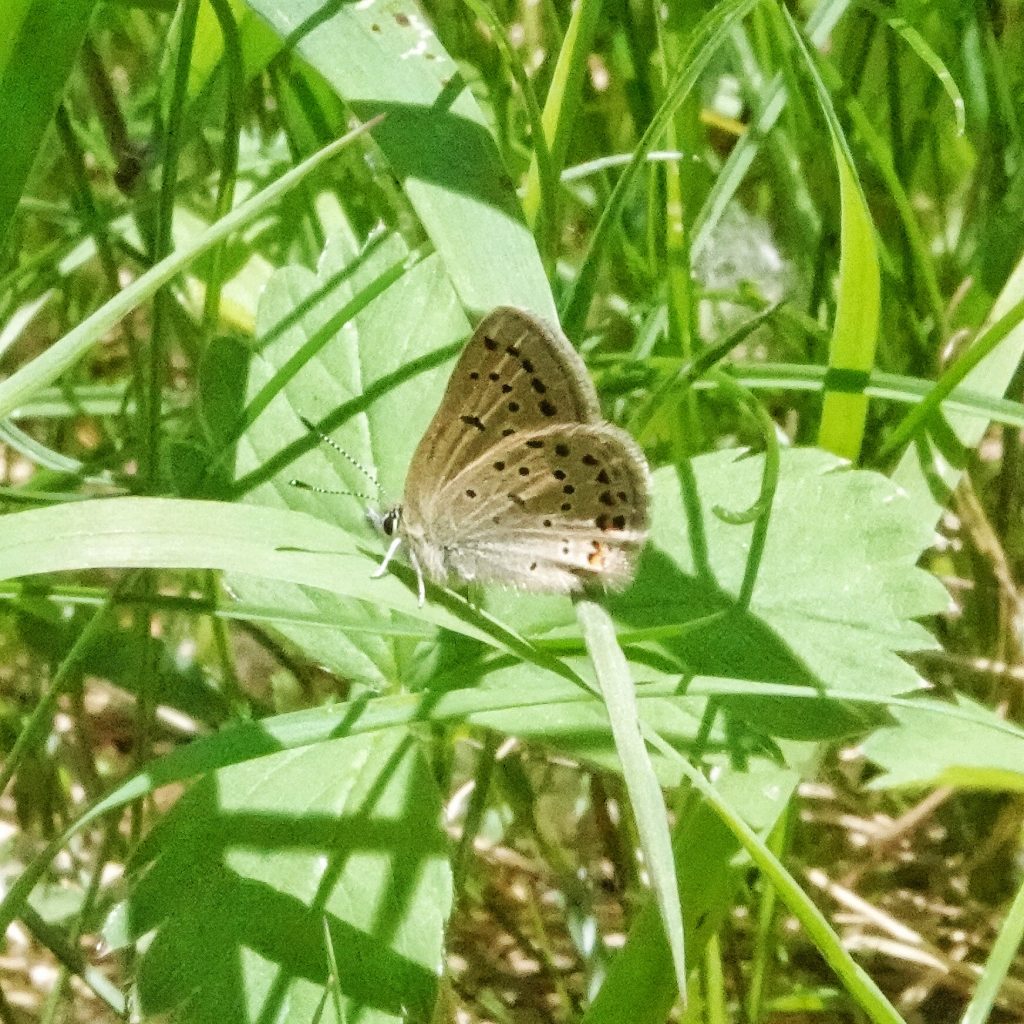
Description– “[From Ferris and Brown 1981; Scott 1986; Opler and Wright 1999; Glassberg 2001; Pyle 2002] Forewing 1.3-1.6 cm. Uppersurface of male iridescent blue to green-blue, of female brown to orange-brown with blue at wing bases, both sexes with dark bar at end of forewing cell. Undersurface pale gray to brown and sometimes green at wing bases, marginal and submarginal rows of irregular black dashes and chevrons about as intense as postmedian row of spots, with subtle series of orange or rusty patches between marginal and submarginal spot rows (more extensive and intense in females)…Best determined by a combination of the uppersurface with dark bar at end of forewing cell, undersurface of hindwing with marginal and submarginal rows of irregular black dashes and chevrons about as intense as postmedian row of spots, with subtle series of orange or rusty patches between marginal and submarginal spot rows (more extensive and intense in females).” Greenish Blue – Montana Field Guide
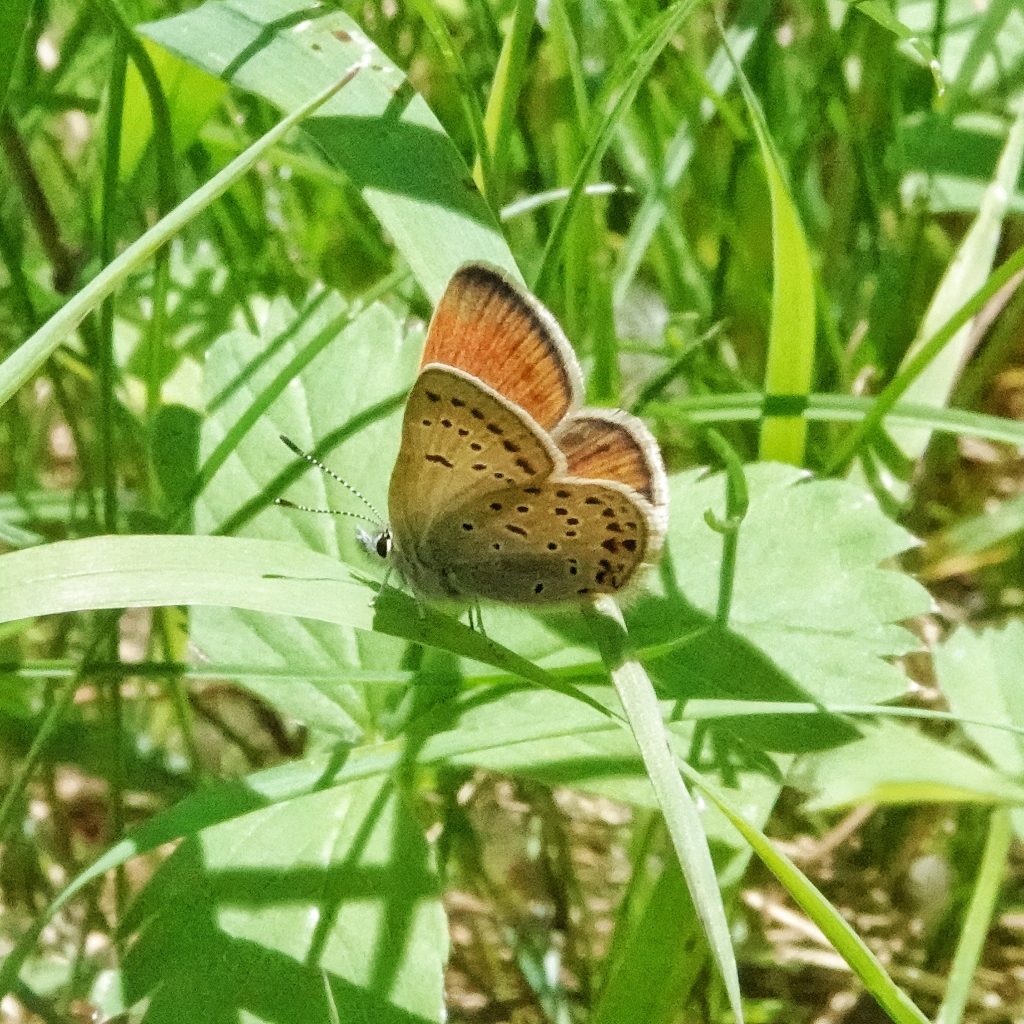
Similar species– Anyone that wants to differentiate amongst the blues in our area needs to download David Droppers’ outstanding, very clear, and free, “Dichotomous Key to the Blues of Washington State”, https://wabutterflyassoc.org/wp-content/uploads/2017/02/Key-to-the-Blues.pdf, which will walk you right through the process, provided you have a clear view or photos of the ventral (and preferably also dorsal) side of the wings.
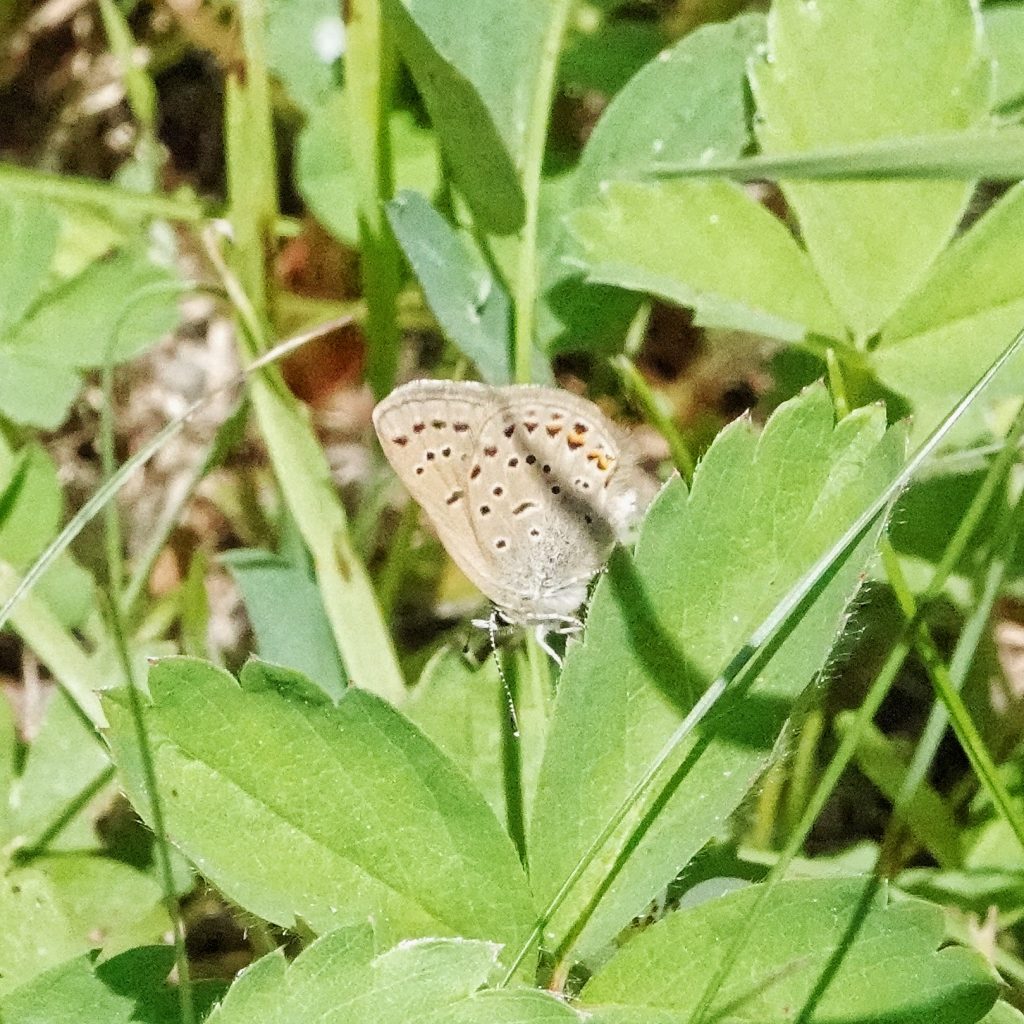
Habitat– “Stream edges, bogs, roadsides, montane moist meadows, above treeline in alpine terrain (Scott 1986; Opler and Wright 1999; Glassberg 2001; Pyle 2002).” Greenish Blue – Montana Field Guide
Range– “Boreal western North America from central Alaska south along mountains to southern California and southwestern New Mexico; east across southern Canada and northern Great Lakes area to Maine.” Greenish Blue Plebejus saepiolus (Boisduval, 1852) | Butterflies and Moths of North America; in the PNW it is found in “…Much of BC, montane WA and OR from High Cascades E. Only Olympics in W. WA, sparingly and very local along OR coast.” “Butterflies of the Pacific Northwest”, Pyle/LaBar; 2018.
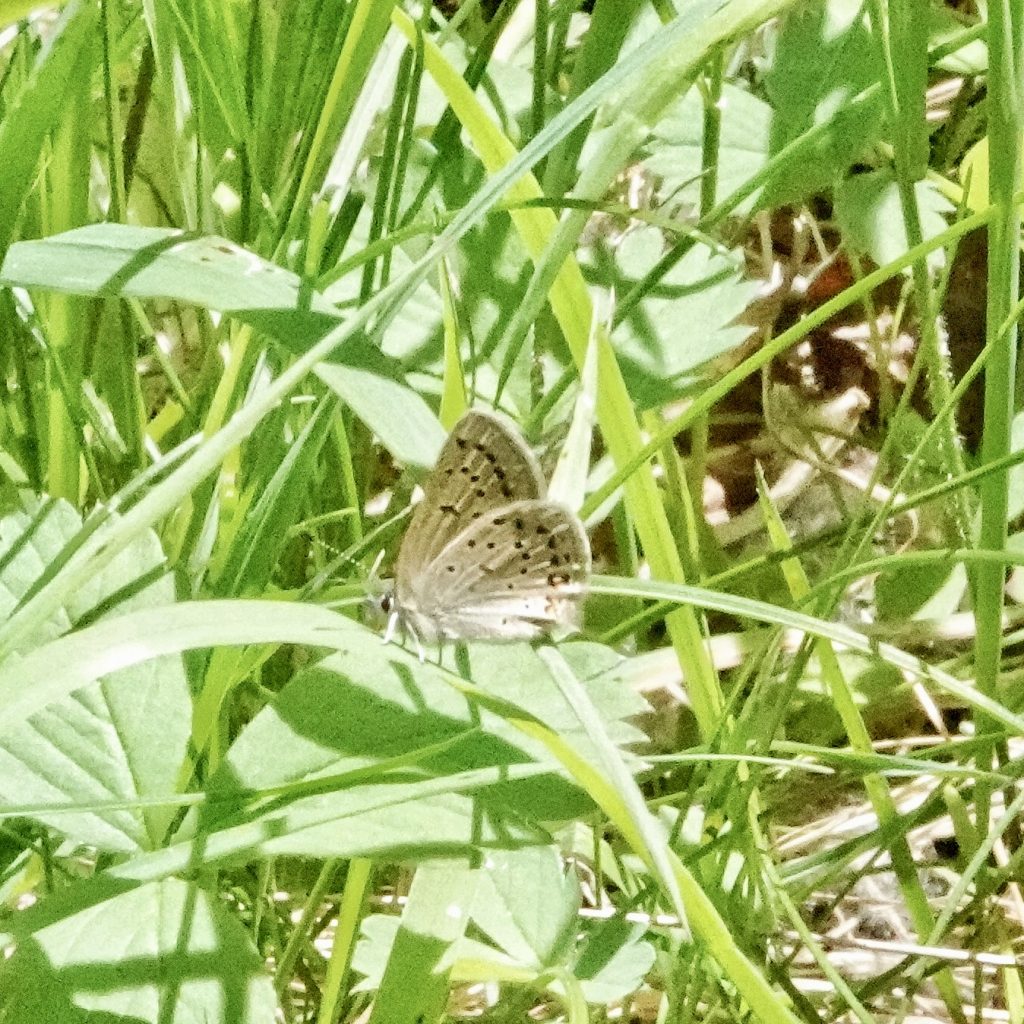
Eats– Larvae eat “…various clovers, incl. Trifolium repens, T. wormskioldii, T. thompsonii, and T. hybridum. Nectars on meadow and naturalized flowers incl. the host clovers, bistort, chickweed, purple thyme, and various composites.” “Butterflies of the Pacific Northwest”, Pyle/LaBar; 2018.
Eaten by- Probably parasitized by larva in the chalcidoid wasp genus Trichogramma, as well as by other wasps and tachinid flies; presumably preyed upon by insectivores of all classes.
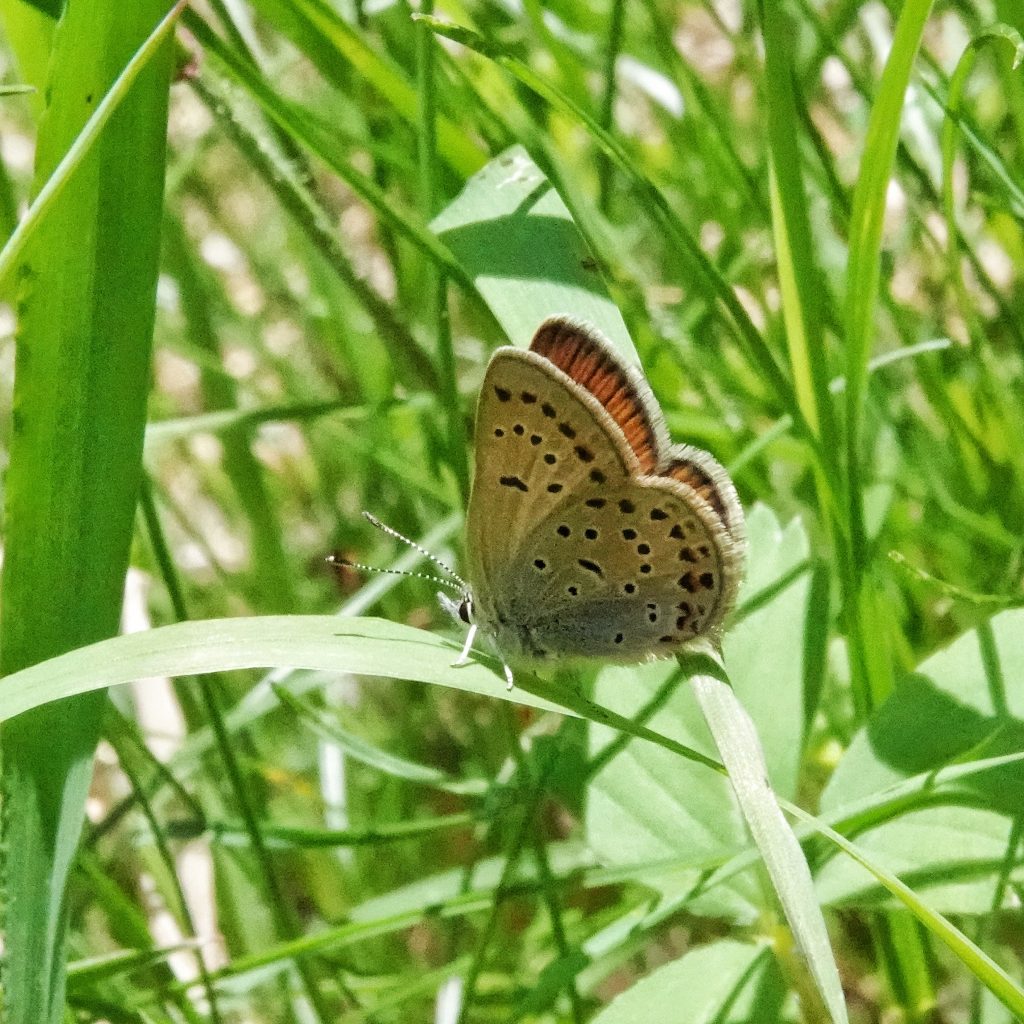
Adults active– “One flight; late May through July at low elevation, late June to mid-August at high elevation and northward (Scott 1986). Mainly June and July, as early as May in lowlands, as late as early September in highlands (Glassberg 2001). Late April to mid-August in Oregon and Washington (Pyle 2002; Warren 2005), late May to early August in British Columbia (Threatful 1988; Guppy and Shepard 2001).” Greenish Blue – Montana Field Guide
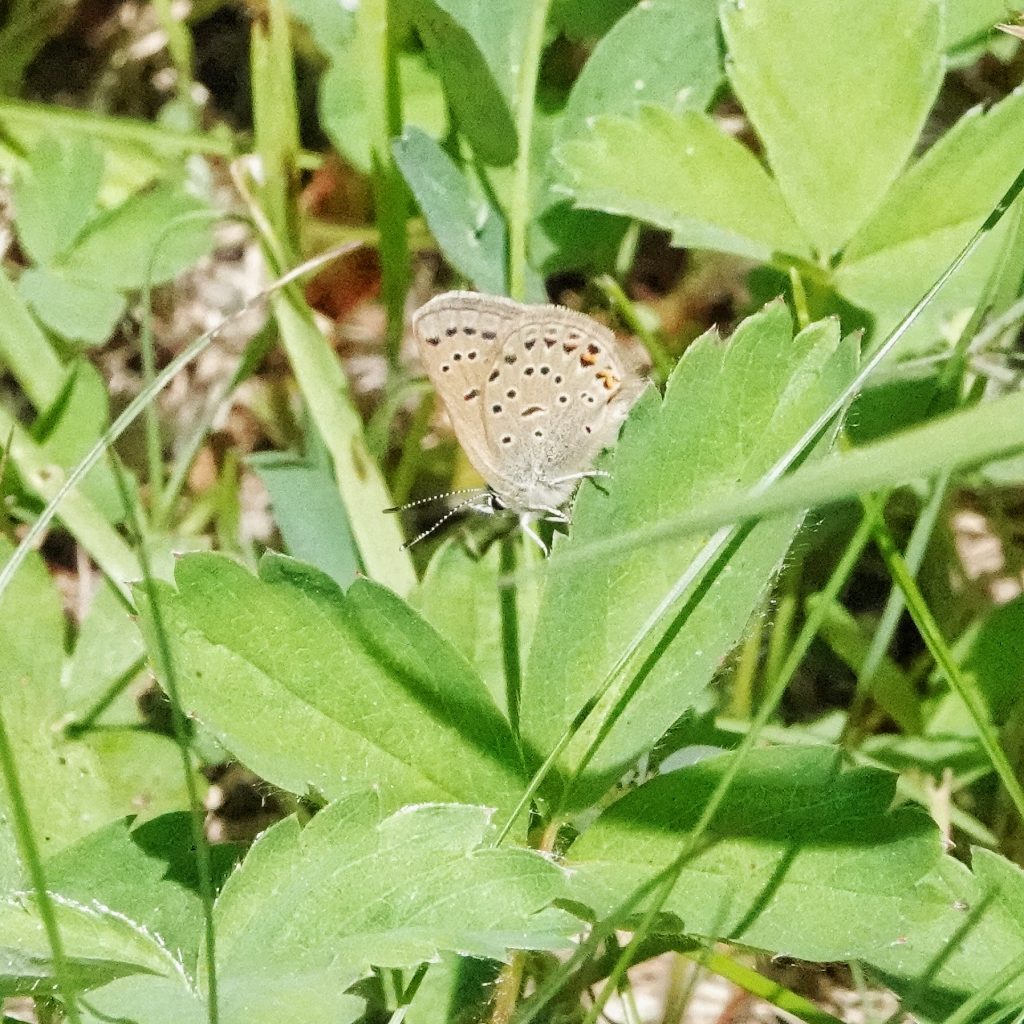
Life cycle– Univoltine; “Males patrol near the host plants, close to the ground. Eggs are laid in flower buds of clover; caterpillars eat the developing flowers. Half-grown caterpillars hibernate, then resume feeding and development the following year.” Greenish Blue Plebejus saepiolus (Boisduval, 1852) | Butterflies and Moths of North America
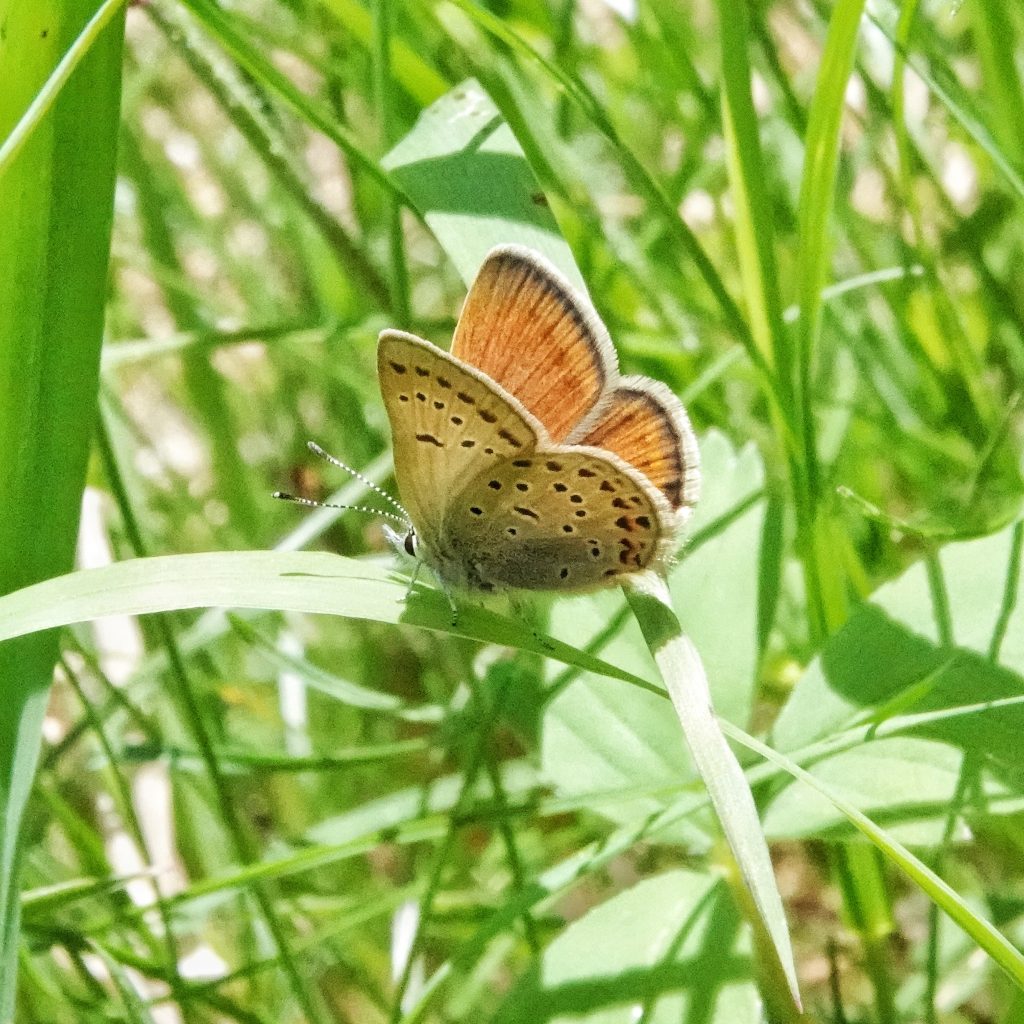
Etymology of names– Icaricia was named by Nabokov after a combination of Icarus (who, according to Greek myth, flew too close to the sun with wings made of wax) and the Aricia genus of Blues. The specific epithet saepiolus appears to be from the Latin for ‘a small fence’ but it is unclear what that refers to. The ‘greenish’ of the greenish blue refers to the wing bases of some subspecies which do not occur in the PNW. Our greenish blues have no green.
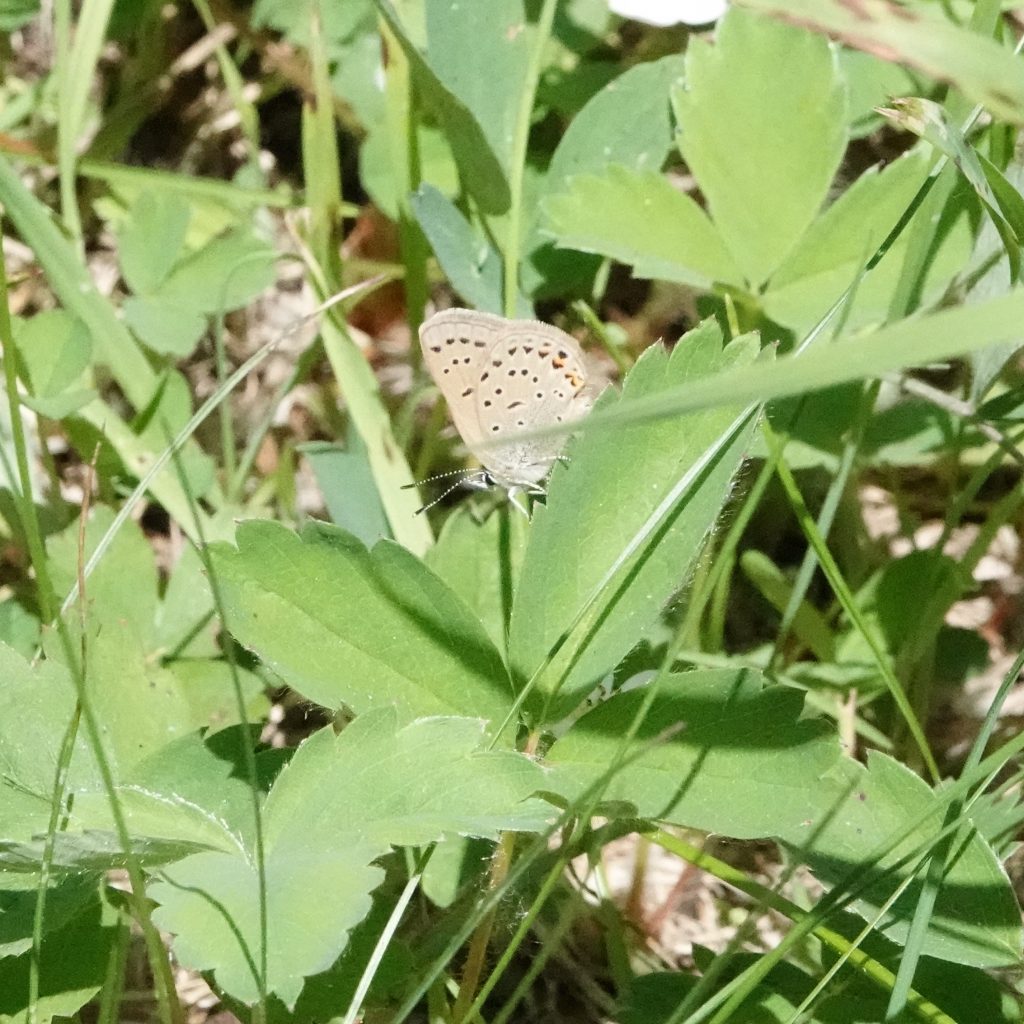
Greenish Blue Plebejus saepiolus (Boisduval, 1852) | Butterflies and Moths of North America
Greenish Blue – Montana Field Guide
Species Plebejus saepiolus – Greenish Blue – Hodges#4376 – BugGuide.Net
